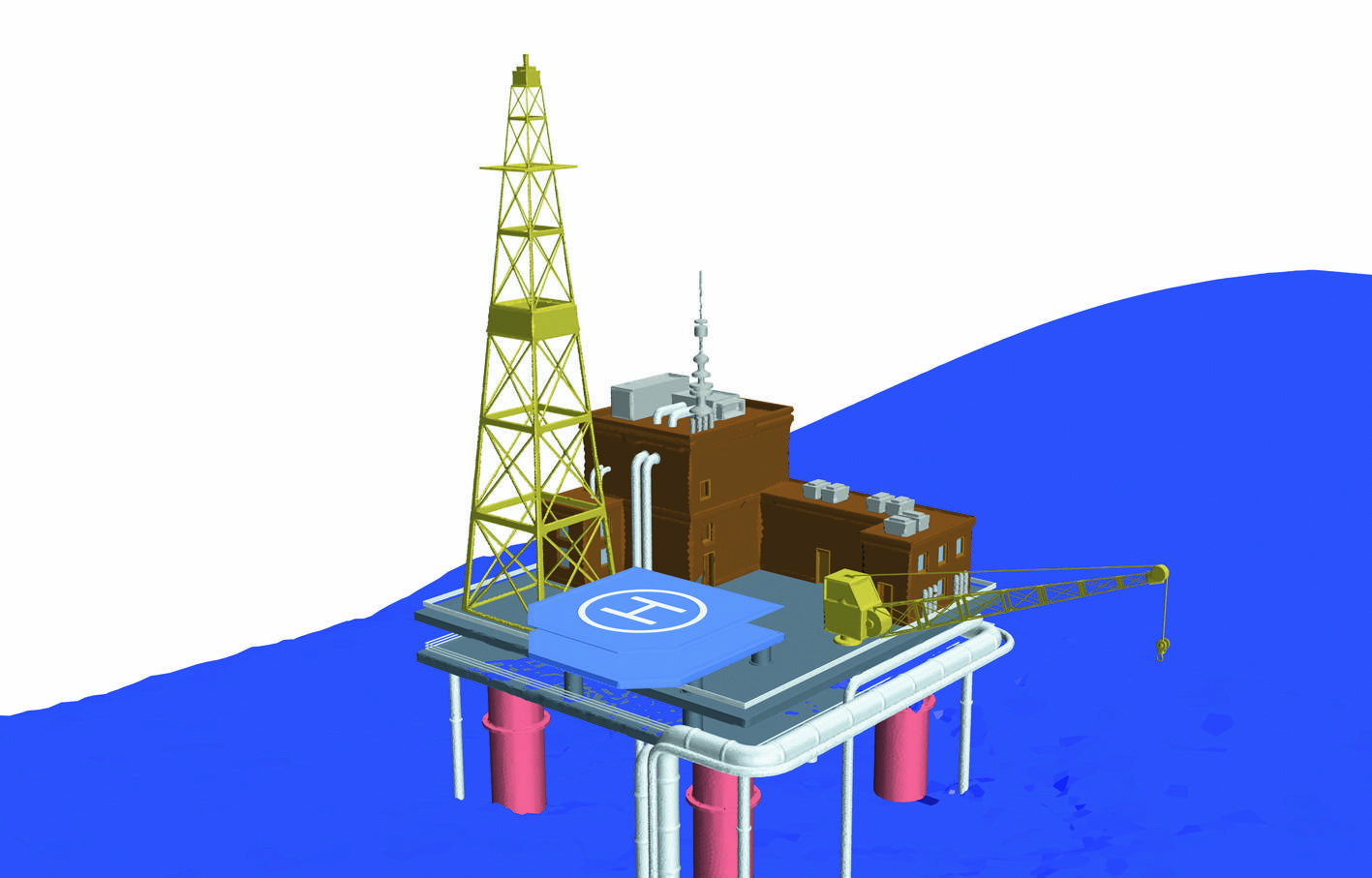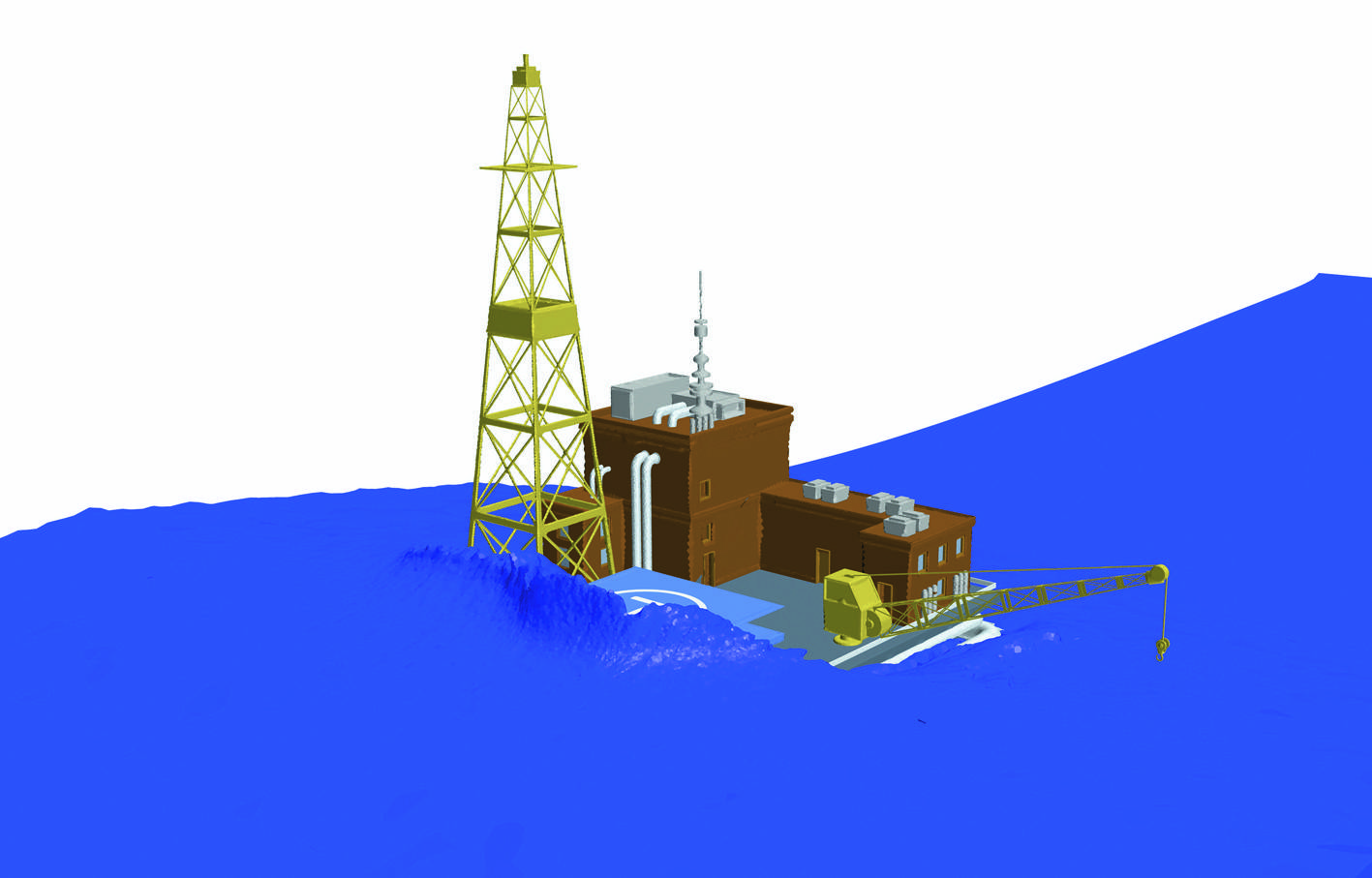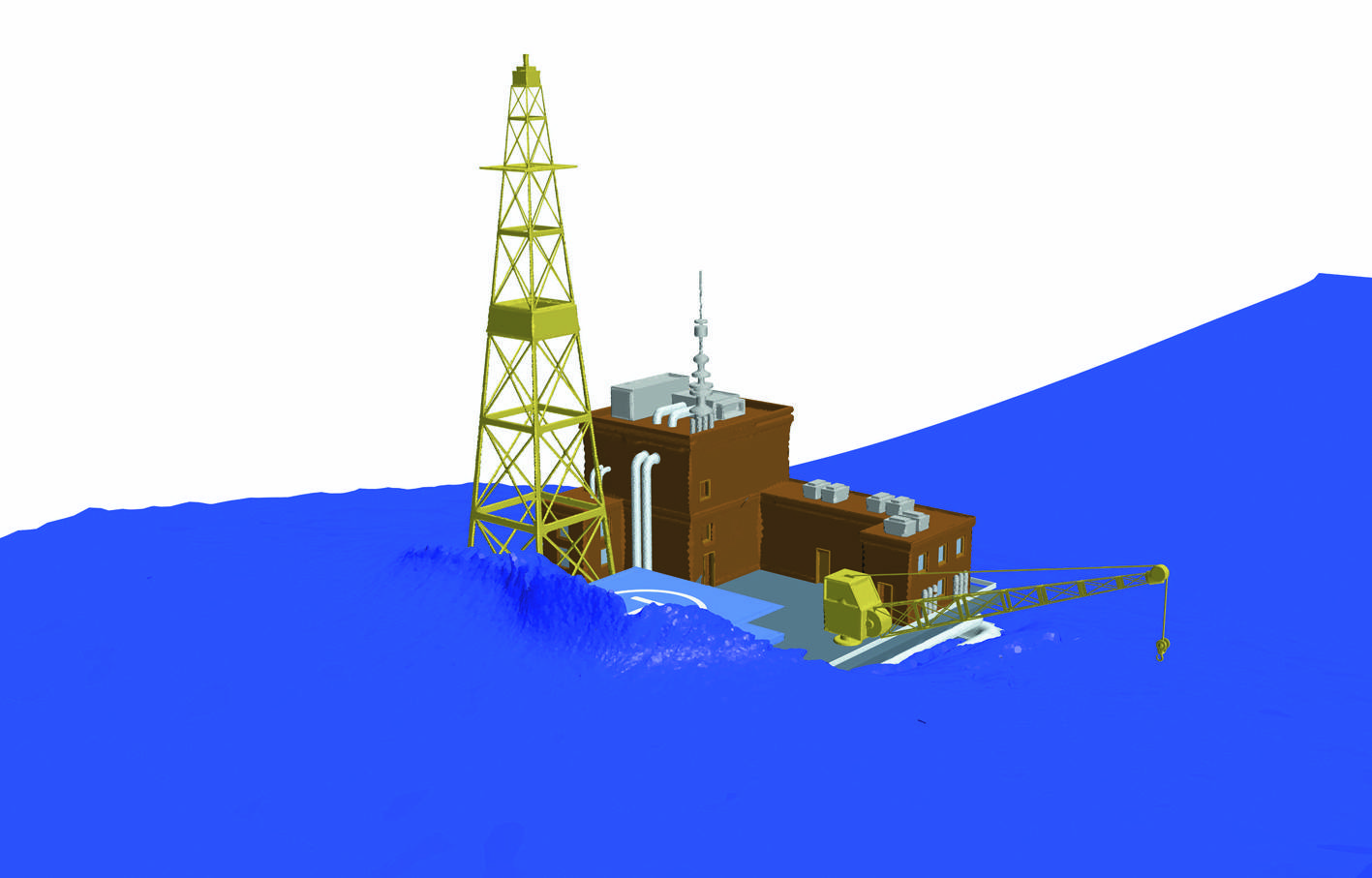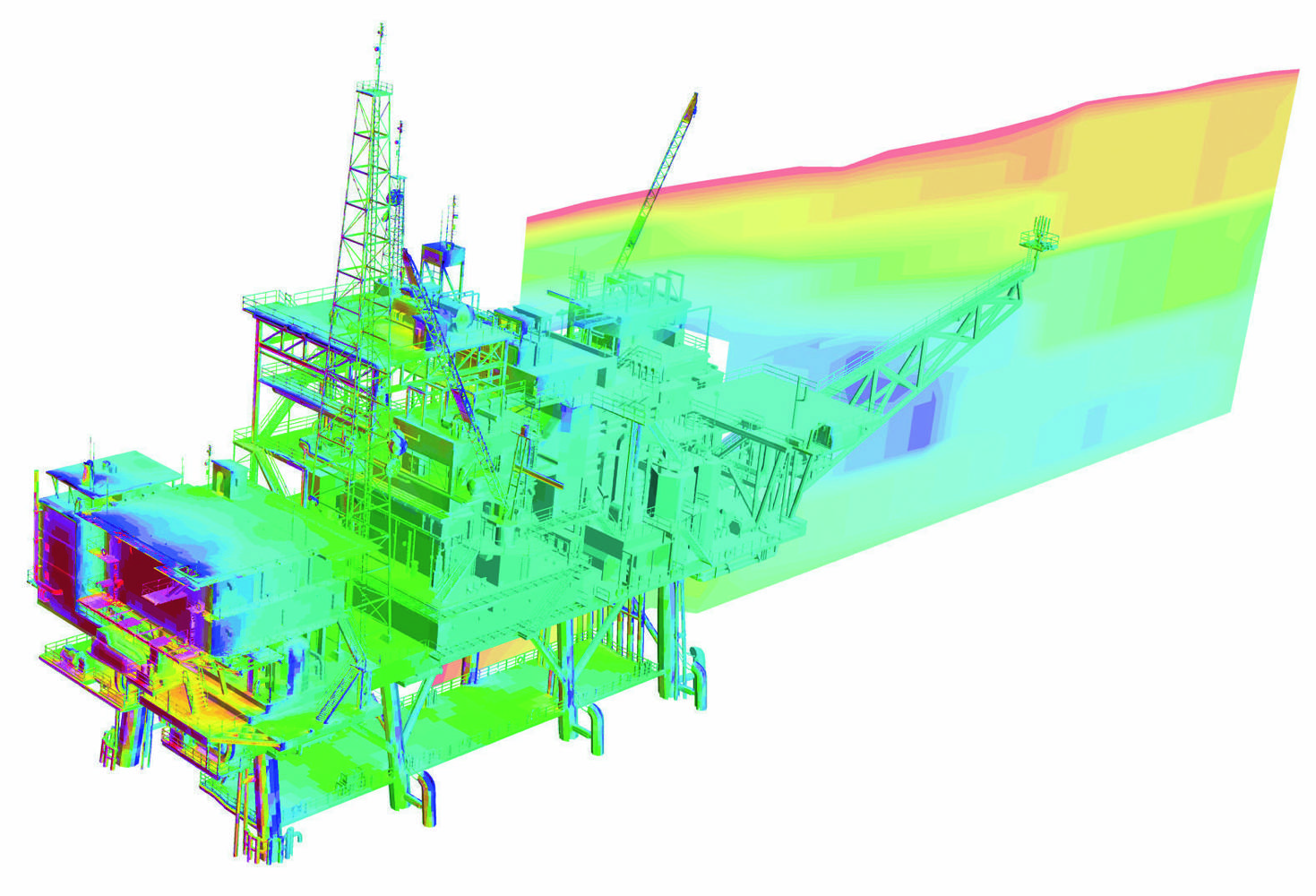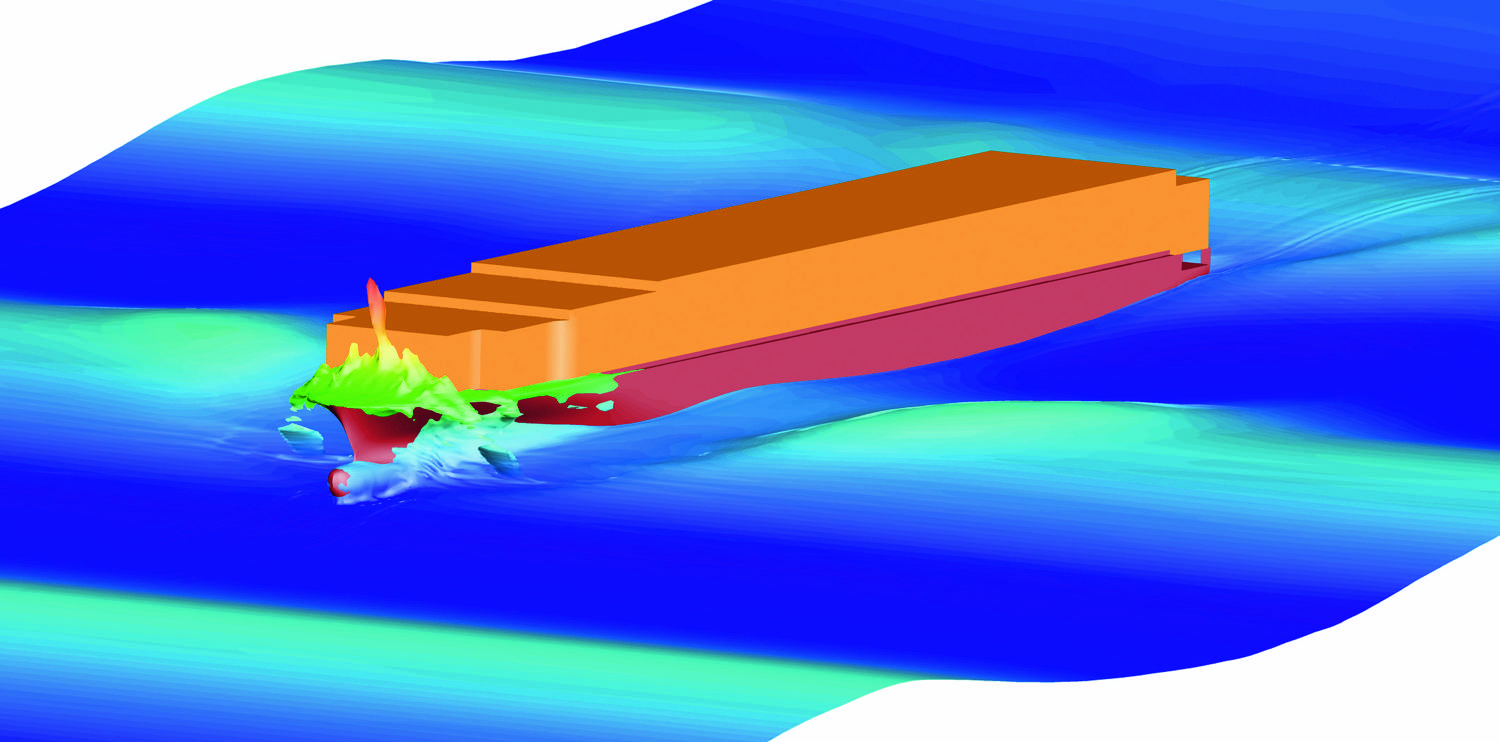In the design of marine applications CFD is used to find out how units are affected by the impact of waves and to optimize the structures accordingly. Stephen Ferguson explains the way this technique shows the range of conditions for safe operation
Current design standards require that platforms be built to survive so-called 100-year storms, which generate wave heights of[ds_preview] up to 70 ft. However, during hurricane »Ivan« peak wave heights of over 90 ft were measured (including one that severely damaged the Chevron Petronius platform in the Gulf of Mexico) consistent with a once-in-2,500-years storm.
The problem is compounded by the fact that many of the 4,000 platforms operating in the Gulf of Mexico were designed before 1988, when the current 100-year design standards came into operation – although some of the destroyed platforms were of a more recent design.
The scale of these losses combined with pressure from insurers has led to a rapid re-evaluation of the techniques used to design offshore platforms. Many operators are turning towards Computational Fluid Dynamics (CFD) in order to provide additional insight into how their platforms perform under the most extreme operating conditions.
CFD is a technique that simulates fluid flow phenomena using super-computer technology. Although its origin is based on the aerospace and automotive industries, CFD is increasingly finding application in many areas of the oil and gas industry. CFD can be used to simultaneously simulate the aerodynamic effect of strong winds on the platform with the hydrodynamic influence of waves impacting on it. Although CFD technology has been routinely applied in many industries since the early 1980s, it has only recently begun to be seriously used in offshore platform design. Most current offshore platforms were designed using extensive experimental model testing. Although experimental analysis provides considerable insight into the performance of a particular design, physical prototypes are expensive and time consuming to construct.Jim Ryan, CD-adapco’s Sector Manager for the energy sector, explains: »It isn’t that CFD technology wasn’t available when the current generation of platforms was designed; CFD technology has been routinely applied in many industries since the early eighties. It is just that the cost of performing the analysis would, until very recently, have been too prohibitive.«
Ryan feels that the biggest advantage of CFD is that its rapid turnaround time helps to break the dependence of offshore design on pre-existing design codes. Though design wind and wave conditions are a useful starting condition for offshore platform analysis, CFD simulation allows designers to more easily pursue multiple »what if« scenarios. Once a CFD model for a platform is set up, it is relatively simple to repeat the calculation for multiple loading scenarios.
»Instead of becoming stuck by the fact that the design codes don’t deal with wave heights above 70 ft, using CFD, designers are free to consider the impact of wave heights of 80, 90, or even 100 ft,« says Ryan. »All they need to do is to input the new condition and sit back while the computer does the number crunching. It is a very effective way of assessing the limit of your design.«
Unlike testing of physical prototypes, CFD simulations are typically carried out at full scale (the computer model has the same dimensions as the actual production platform rather than those of a smaller experimental model). This has the considerable advantage that results can be interpreted directly and do not have to undergo scaling, a process that can introduce a significant uncertainty, especially for transient phenomena such as the impact of a wave. A further advantage is that, instead of being restricted to retrieving data from a few experimental monitoring probes, data are available at every point on the platform, at every discrete time interval for which the simulation is performed. The wave impact on a platform can be viewed from any angle, and the instantaneous forces acting on any part of the structure can be calculated.
Data from CFD calculations can also be used to assist other types of analysis, for example, the forces acting on a platform can be exported to a stress-analysis software package. In extreme cases, where fluid forces cause large deflections of components, the CFD simulation can be coupled directly with the stress analysis tool and both stress and fluid simulations can be performed simultaneously, each simulation feeding new boundary conditions to the other. In Ryan’s view, the adoption of CFD technology as a routine part of offshore design is inevitable. »In the automotive industry almost every component is designed with the aid of CFD technology, to bring a new product to market without it would be unthinkable,« he says. »The potential financial and environmental impact of future hurricanes means that the oil and gas industry has no choice but to follow suit.«
Stephen Ferguson







